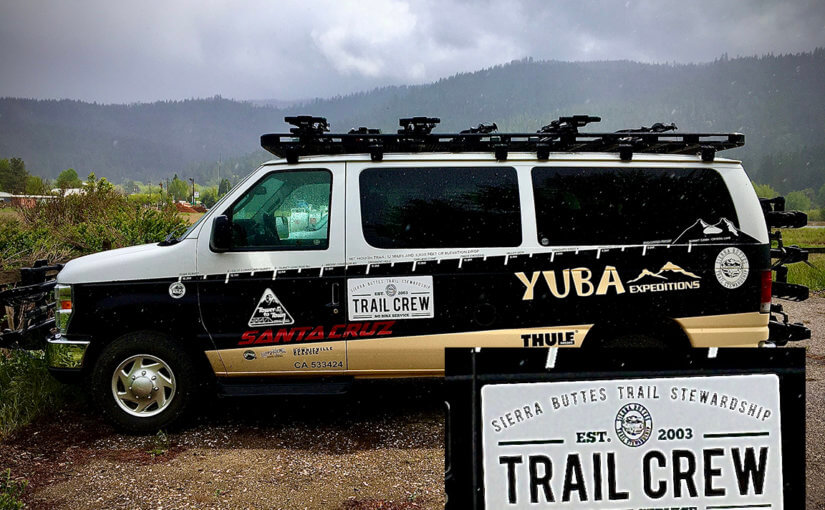If there’s one thing learned from our newfound reality, it’s that trails are an essential part of human existence. As long as organisms have roamed Earth under their own power, there have been trails. Ribbons of dirt winding through varied terrain, contouring the topography; a lifeline for those who rely on trails to connect with civilization. In modern times, trails serve as a lifeline to maintain our mental and physical health, as well as our connection with the outdoors.
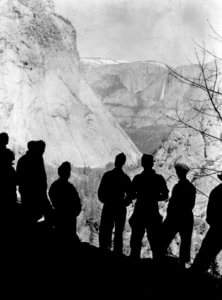
While these may seem like unprecedented times, there is a parallel with the past. In the wake of the Great Depression, an organization called the Civilian Conservation Corps (CCC) was created in 1933 by Franklin Delano Roosevelt’s New Deal program. The CCC became the most popular program of the New Deal, putting millions of unemployed, able-bodied Americans to work in the outdoors doing conservation and natural resources work. The CCC created a trails renaissance in America, giving birth to hundreds of miles of new trail, many of which are now National Scenic Trails and National Recreation Trails.
With more than 36 million unemployed Americans in the last two months, we very well may be on the brink of the need for another trails renaissance. Lately, the woods have never been bustling with more hikers, bikers, equestrians and families, as folks who are out of work or locked down in their homes are flocking to local trails for that vital dose of mental and physical health. We are getting the SBTS Pro Trail Crew back to work, gearing up for the new COVID social distanced and safe existence, converting our Yuba shuttle vans to crew transport vehicles and soon the woods will become alive again to the chorus of chainsaws clearing deadfall from trails. And this century’s Trail Renaissance begins…
Getting Back to Work – Downieville Crew Activation
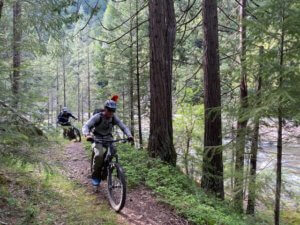
Since early March, the Sierra Buttes Trail Stewardship Professional Trail Crew has been shut down, deemed a “non-essential” California operation. But all the while, SBTS has worked closely with the U.S. Forest Service and both Sierra County and Plumas County Board of Supervisors to get our crews back to work, formulating a plan to abide by new health regulations so everyone stays safe.
Because our crew all live in rural communities and have been abiding shelter-in-place orders, they have essentially been self-quarantining at Slate Castle and our SBTS employee housing area for the last couple of months. They are healthy and ready to get back deep into the woods on the trail – an ideal “social distancing” workplace if there ever was one – creating more #dirtmagic for the public to enjoy. After what has felt like years rather than months, the SBTS Pro Trail Crew is lacing up their boots, sharpening their saws and getting back out on the trail.
This is a transformational time for trails and for SBTS as a trail building organization. We are modifying the operational side of our non-profit to abide health concerns, while putting dozens of locals back to work in the dirt, continuing progress on many exciting projects like Beckwourth Peak Trail in Portola and Phase 2 of new trails on Mount Hough in Quincy – both of which are “shovel ready”. We are also continuing our work on the Connected Communities legacy project with the Sierra Nevada Conservancy, a regional plan connecting four rural California counties and 15 communities with 300 miles of new motorized and non-motorized trails.

What’s it take to get a trail project “Shovel Ready” (ready for construction) on public lands?
Patience and funding, as well as community and land manager support are the real keys to getting a project “Shovel Ready” on public lands. Some projects can take 10 or more years to develop and cost hundreds of thousands of dollars in environmental studies, just to complete the necessary planning that is required to start construction.
For new projects, we partner with land managers to conduct surveys and documentation for completing the National Environmental Policy Act (NEPA) and the California Environmental Quality Act (CEQA), which includes: heritage, wildlife, botany and recreation surveys, public education, input and support, flagging and GIS mapping, and meetings. Lots of meetings.
Click here to see what it took to get the Beckwourth Peak Recreation Trail “Shovel Ready”.
Plumas Crew Activation
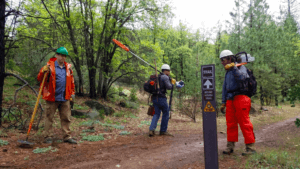
We were finally able to get the Quincy crew back to work on May 18th. We have had to make some changes in order to function with all this madness, but now that we are on the trail, things are almost back to normal. Since we are spread out when digging, the 6-foot rule is relatively easy to do and everyone has their own tools. There are some things we have to share like the power wheelbarrow, plate compactor and tractor. Mandy gave each crew member their own sanitation package with germ-killing spray, paper towels and latex gloves, so when we need to share tools we spray it, wipe it down and then use. One other change is that we cannot carpool unless we live in the same house or wear latex gloves and face-covering while in the vehicle together. Kamron has been issued a Yuba van to use as a work truck (you may recognize that carpet he’s installing from the Downieville Classic river jump), Mandy has The Turd (our old land cruiser), Scott and Alex have both been commuting on moto and Henry is in his work truck.
Luckily we have been getting a good amount of rain and the Mt. Hough Trail is ripping right now. We have been taking advantage of the soil moisture and working our way up Hough smoothing out braking bumps, buffing turns, brushing and enhancing drains. We will continue working our way up Hough for the next couple of weeks while ending the day with breathtaking views and a cold Sierra Nevada.



